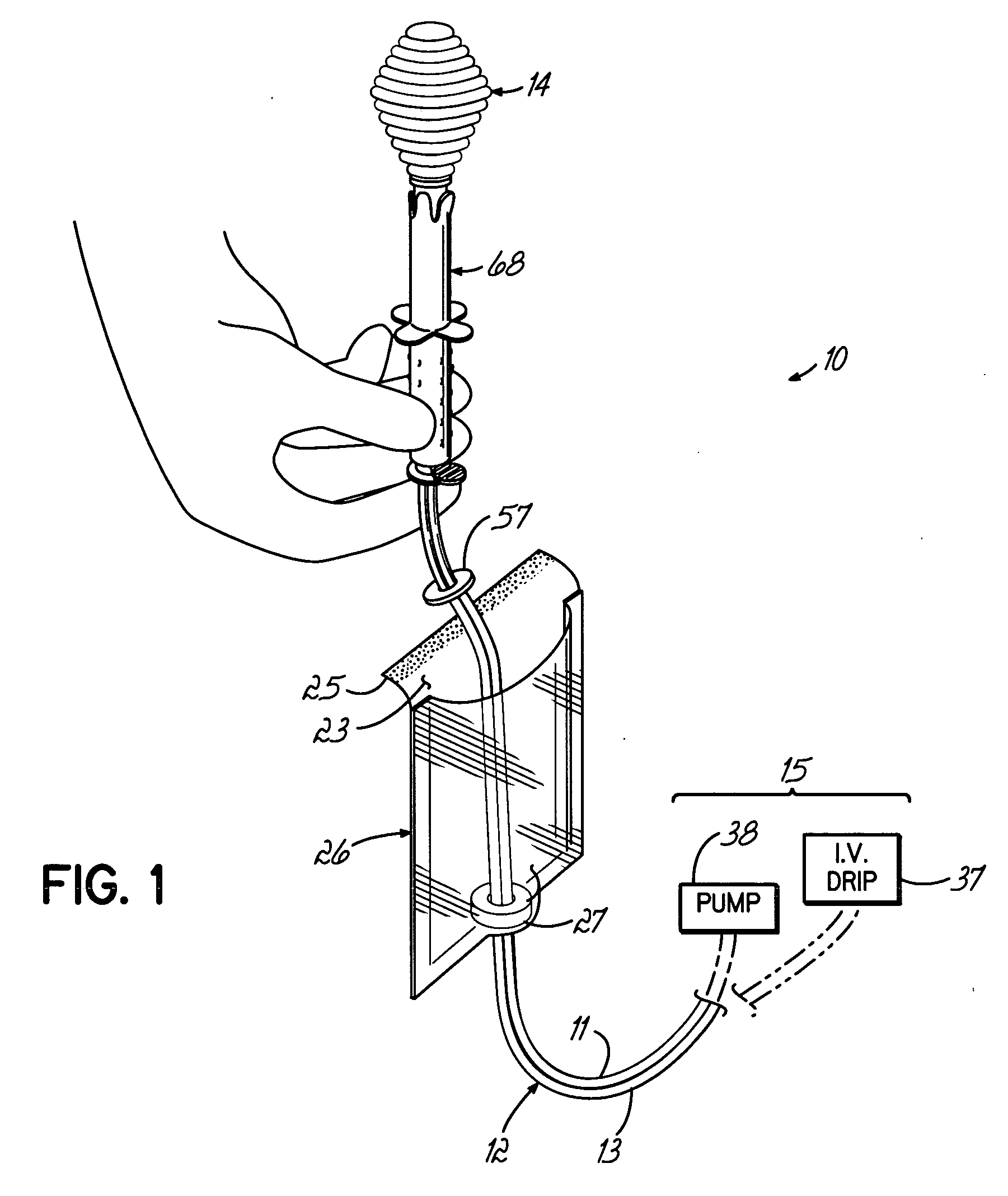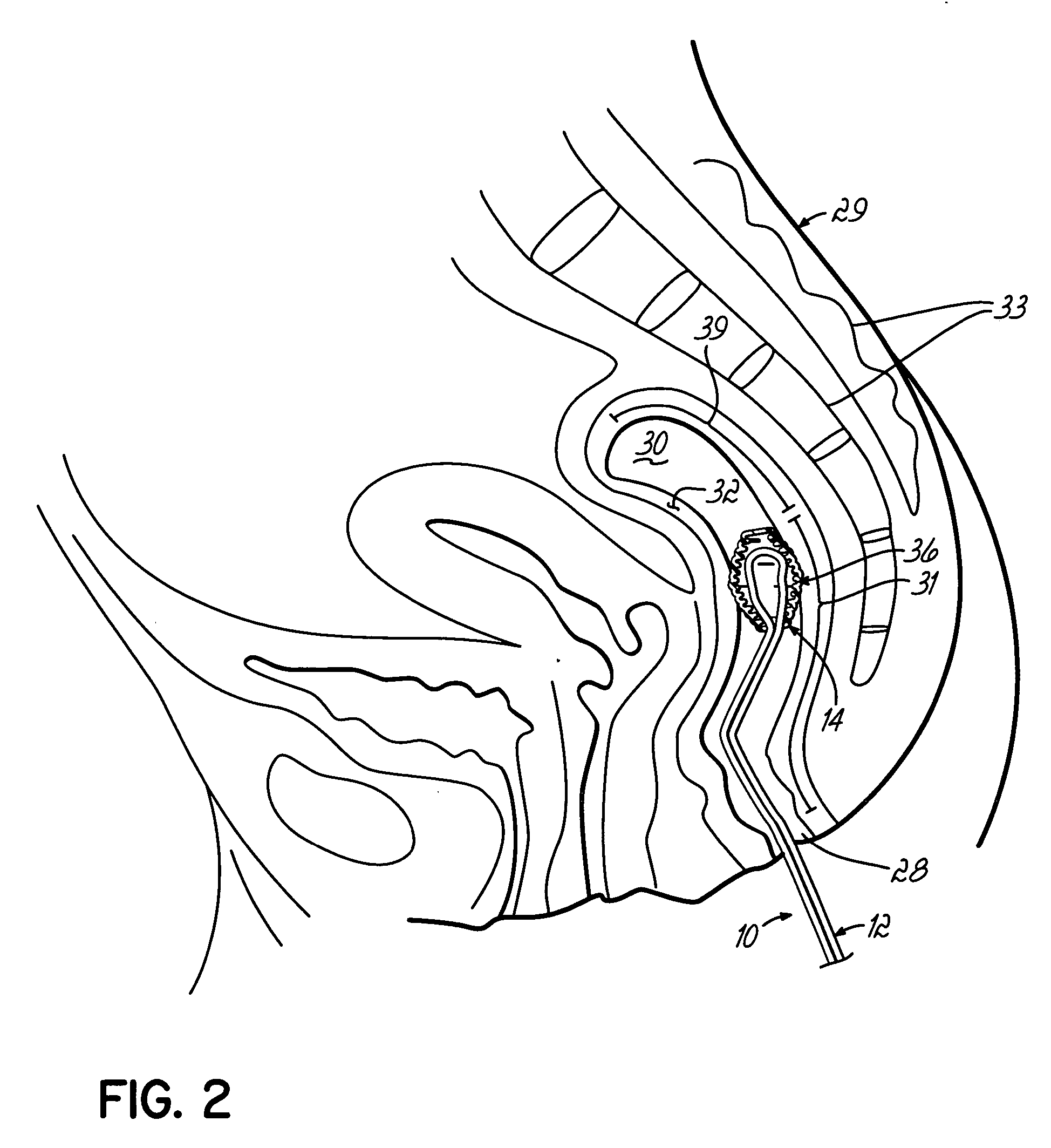System and method using the rectal mucosal membrane for inducing hypothermia and warming
a rectal mucosal membrane and system technology, applied in the field of system and method for inducing hypothermia and warming the body, can solve the problems of inconvenient cooling by cold blankets and dressings, inability to achieve and maintain hypothermia of the central nervous system, and inability to achieve and maintain hypothermia on the surface, etc., to achieve efficient and effective cooling, prolong the reversal of cranial structures, and increase intraabdominal pressure
- Summary
- Abstract
- Description
- Claims
- Application Information
AI Technical Summary
Benefits of technology
Problems solved by technology
Method used
Image
Examples
Embodiment Construction
[0036]FIG. 1 is a schematic view of one embodiment of the cooling system 10 of the present invention. The system will be described in one embodiment herein for providing cooling and hypothermia. However, in accordance with another aspect, the system may be used for warming to counteract the induced hypothermia or to counteract other hypothermia or cooling conditions such as those associated with exposure to environmental conditions. The system 10 includes a delivery tube or tubes 12 which are coupled to a supply 15 of fluid to be dispensed therethrough. The supply 15 may include, for example, an I.V. drip bag 37 or a pump 38, for example. The delivery tube 12 is coupled to a cooling / warming head or head structure 14, which receives fluid delivered thereto by the delivery tube 12. The delivery tube 12 in one embodiment is biluminal, having an inflow lumen 1 and an outflow lumen 13, thereby allowing the cooling fluid to be circulated into and out of the head structure 14. In several e...
PUM
 Login to View More
Login to View More Abstract
Description
Claims
Application Information
 Login to View More
Login to View More - R&D
- Intellectual Property
- Life Sciences
- Materials
- Tech Scout
- Unparalleled Data Quality
- Higher Quality Content
- 60% Fewer Hallucinations
Browse by: Latest US Patents, China's latest patents, Technical Efficacy Thesaurus, Application Domain, Technology Topic, Popular Technical Reports.
© 2025 PatSnap. All rights reserved.Legal|Privacy policy|Modern Slavery Act Transparency Statement|Sitemap|About US| Contact US: help@patsnap.com



